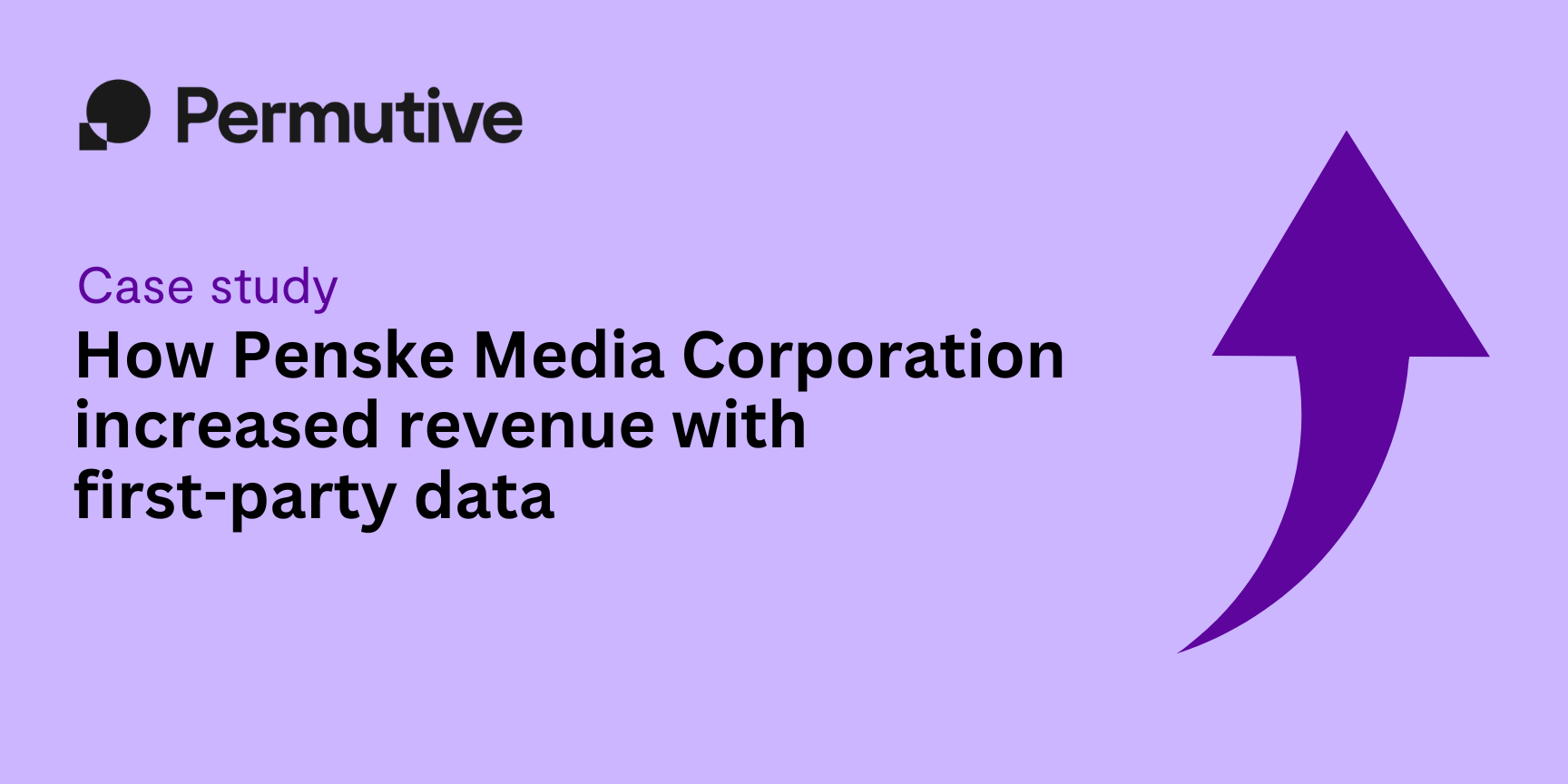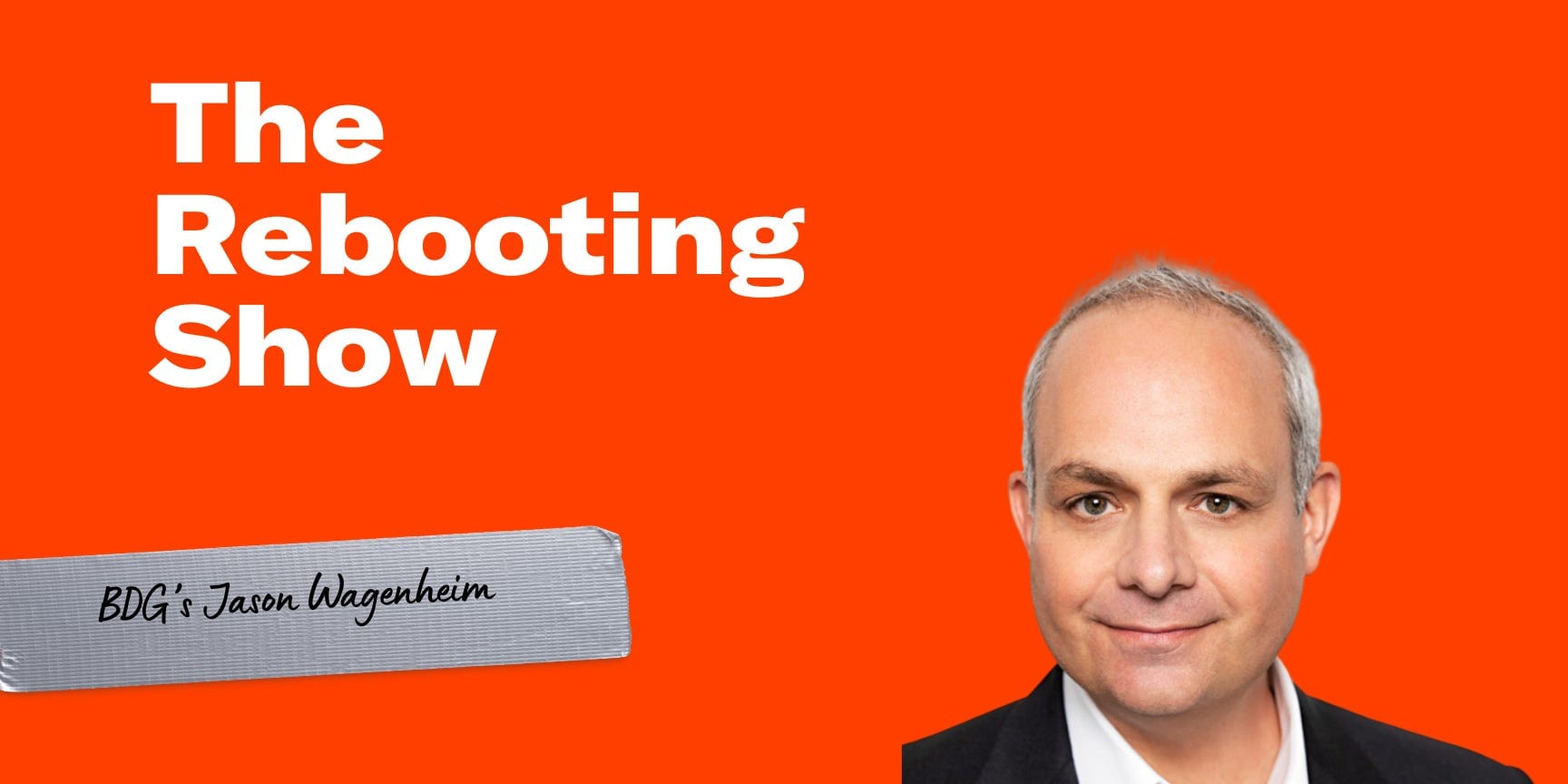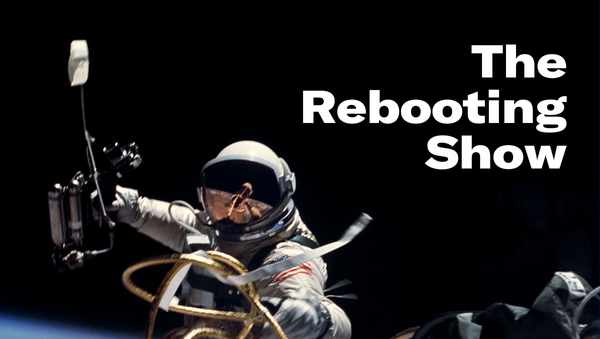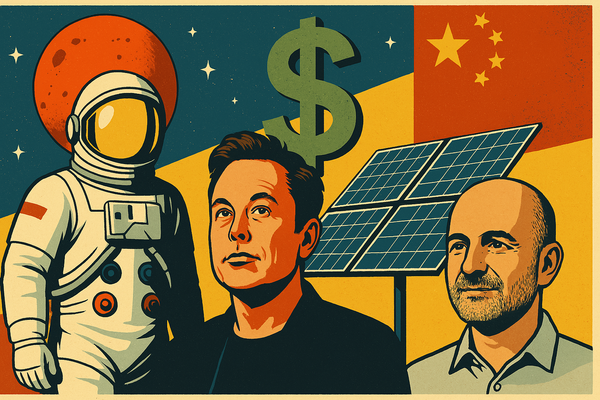RIP traffic
Bustle moves on from scale

On this week’s episode of The Rebooting Show, I spoke to Bustle Digital Group CRO Jason Wagenheim about the end of the traffic/scale era and how AI search will only accelerate that demise. On that subject, I’m talking about the impact of AI search on publishers in a BlueConic webinar today at 1pmET. Join us.


Penske Media Corporation is a pioneer in digital media and a platform innovator. Still, like other publishers, it faces the challenge of regulators and big tech companies giving users the tools, awareness and choice to protect their privacy by opting out of data sharing. As a result, addressability across the web has collapsed to 30%, putting open marketplace (OMP) revenue in freefall. This case study explores how PMC has overcome this challenge since partnering with Permutive, and increased revenue from first-party data by 46%.
RIP ComScore uniques

2013 was a different era in digital media. There was real optimism that the Mary Meeker slide would pan out and the next great media companies were being built in lofts in Chinatown, rooftops in Soho, warehouse space in Williamsburg and even a loading dock apparently. In a Williamsburg brownstone, former Bleacher Report co-founder Bryan Goldberg was loudly announcing his bid to outdo Refinery29 and take over for Condé Nast and Hearst. It was plausible.
Bleacher was one of the original traffic monsters, mastering SEO in particular and eventually social. Magazine companies has thrown in the towel on digital sometime after the iPad magazine craze fizzled. Bustle would apply the same scale playbook to capture magazine ad budgets — and do it without the chauffered-car and wardrobe budgets. Ever-eager millennials fell for this and served on the front lines of the scale wars as content fodder to keep costs down. The currency of this weird period: the ComScore unique visitor tally, no matter if they were fleeting impressions from SEO flotsam or a three-second glance in a Facebook feed.
I was reminded of how weird this bygone era was yesterday when walking by the BuzzFeed-branded store in the obscenely underaged LaGuardia Airport. It felt like such a relic I posted a photo of it to Instagram and got not one but two “lol” responses dm’d in reply. One added “literally everything about that is a nightmare.”
Bustle won at scale for a while. In 2018, it was leading its sales pitch with its 48 million uniques. Jason Wagenheim told me on this week’s episode of The Rebooting Show that seven years ago, 85% of Bustle’s business was selling media; it’s now 15%, as it leans more on creating brand content, distributing it through platforms with paid or organic reach, and doing live activations at events like Art Basel and Coachella.
This new Bustle is a cross between an agency and a publisher, sometimes buying distribution just like ad agencies.
“I can deliver for you a million views of a piece of content or an ad impression or I can deliver a hundred million,” Jason said. “It doesn't really matter what my O&O traffic is or how much content I have. People are only coming to pages because we want them to come to pages, and through either paid or through organic means gotten our traffic to go to pages so they can view content or an ad impression.”
Of course relying on services falls into every-port-in-storm approach. A services-led model has many downsides — is is valued accordingly by money people. When I explained the gist of this shift to my podcast partner Alex, he remarked, “Like an agency?” Before adding: No thanks. The only business model nearly as bad as publishing.” For his part, Jason said the campaigns are “very high margin.”)
Besides, the downsides of the traffic model are well known. “It was all built on clickbait,” Jason said. “It was all built on writing 37 articles about the solar eclipse. The game of gaming Google is long gone.”
The agency/studio model is one of several pathways for publishing brands to take because the past has passed. Take Nylon, which BDG bought in 2018. Thanks to multifaceted campaigns that often lean on live components (aka events, in my shorthand), Nylon makes more money than it ever but nearly all of it branded content and live events like one recently held for New York Fashion Week.
For a Samsung effort at Coachella, Jason talks about billions of media impressions. “I'm not worried necessarily about generating traffic to Nylon.com as much as I am about scaling and creating engagements on our social platforms and definitely experiences,” he said.
Jason and I covered a lot of topics. And he was admirably candid about the real challenges the industry faces.
Here are a few of my highlights.
On “moment” media: “We are now a moment-driven company. We are attaching our brands and our IP to major cultural tentpoles and moments that we can then leverage to create a deeper relationship and engagement with our audience, but also ultimately for our advertisers.”
On why commerce is no silver bullet: “We created storefronts and it bombed. We had 50-60 million views on products, but when it came time to actually put in your credit card and check out, our readers basically told us through inaction that they weren't going to check out on Bustle for a product. They'd rather go to Amazon or Target or Walmart.”
On AI search: “In short order, and by that I mean the next one to three years, you will be searching for something and you will get a definitive single article that has stolen and culled information from thousands of sources, including ours, and you won't have to go to Bustle.com and get an ad impression delivered to you in a view. It is going to be very disruptive.”
On a bad year: “It's the weirdest, most volatile time I've experienced in almost 30 years of doing this. We will be down this year in revenue. It's the first year we've ever been down in our 10-year history. It's due to a lot of outside forces. The macro sucks right now. If it's not supply chain or inflation, it's war in Ukraine, or it's the stomachache that marketers get when they read a bad headline in the Wall Street Journal about one of their competitors. They're very reluctant and hesitant to spend money, and they're releasing dollars very, very late.”
Check out the full episode on Apple, Spotify or other podcast services.

Moving away from the open marketplace
Learn how Penske Media Corporation monetized 100% of its inventory and increased revenue by 46% when it focused on building a direct-sold strategy and moved away from the open marketplace. Get the full story.
Thanks for reading. Please send me your feedback by hitting reply or sending me an email at bmorrissey@therebooting.com.
The Rebooting Dinner Series is kicking off in a few weeks with a gathering of top revenue executives from publishers. We have four other dinners lined up in the next few months. Fill out this brief form if you work in areas like product, video, advertising and subscriptions at a publisher, or handle advertising at a marketer or agency.




